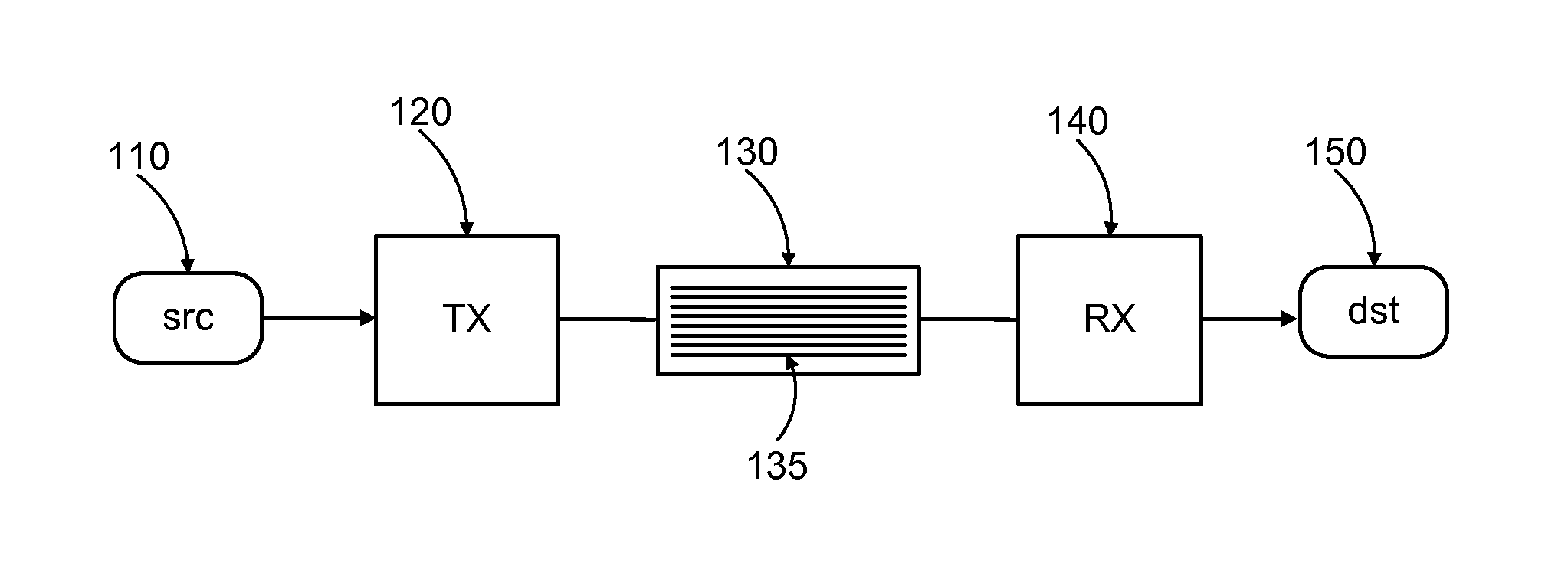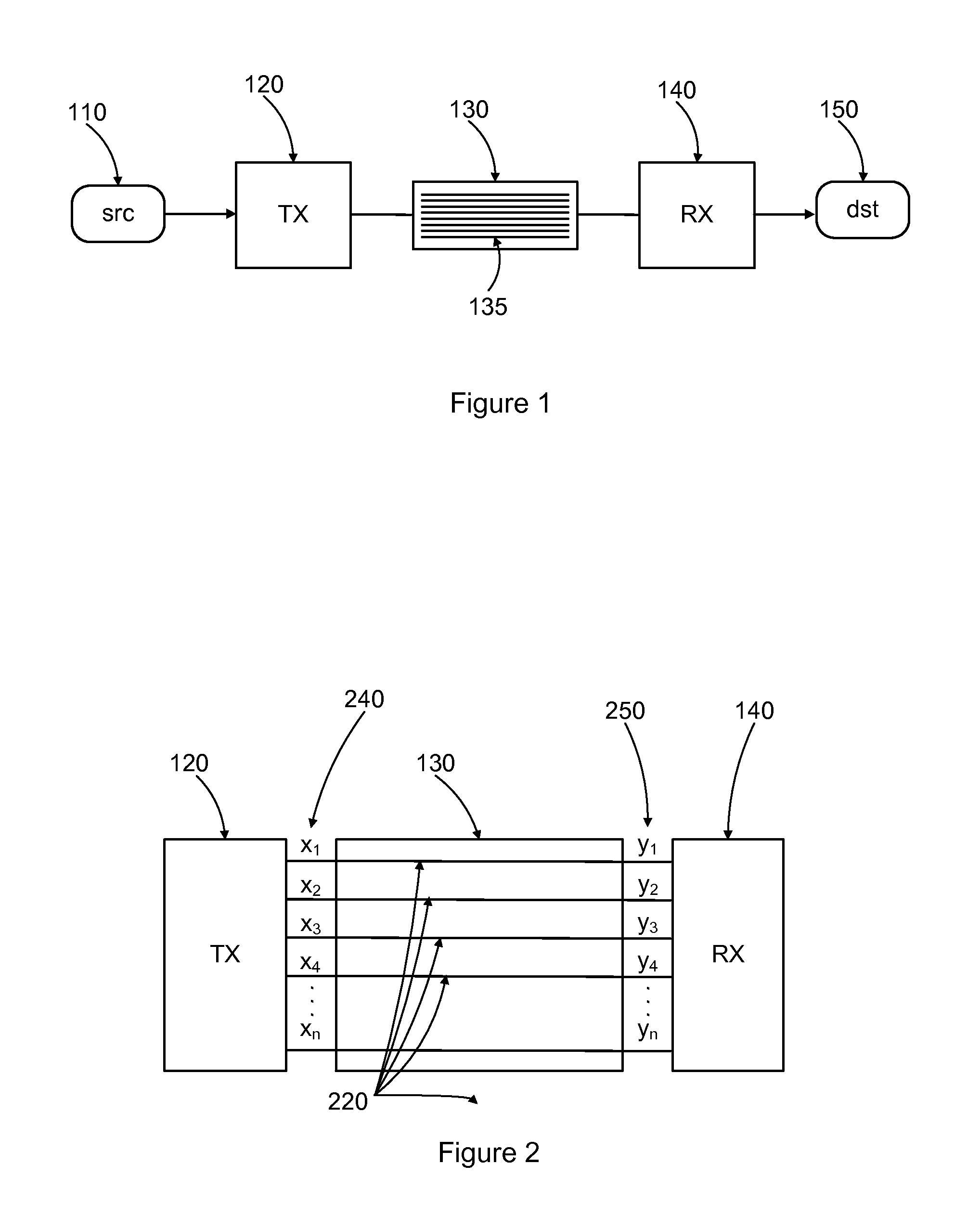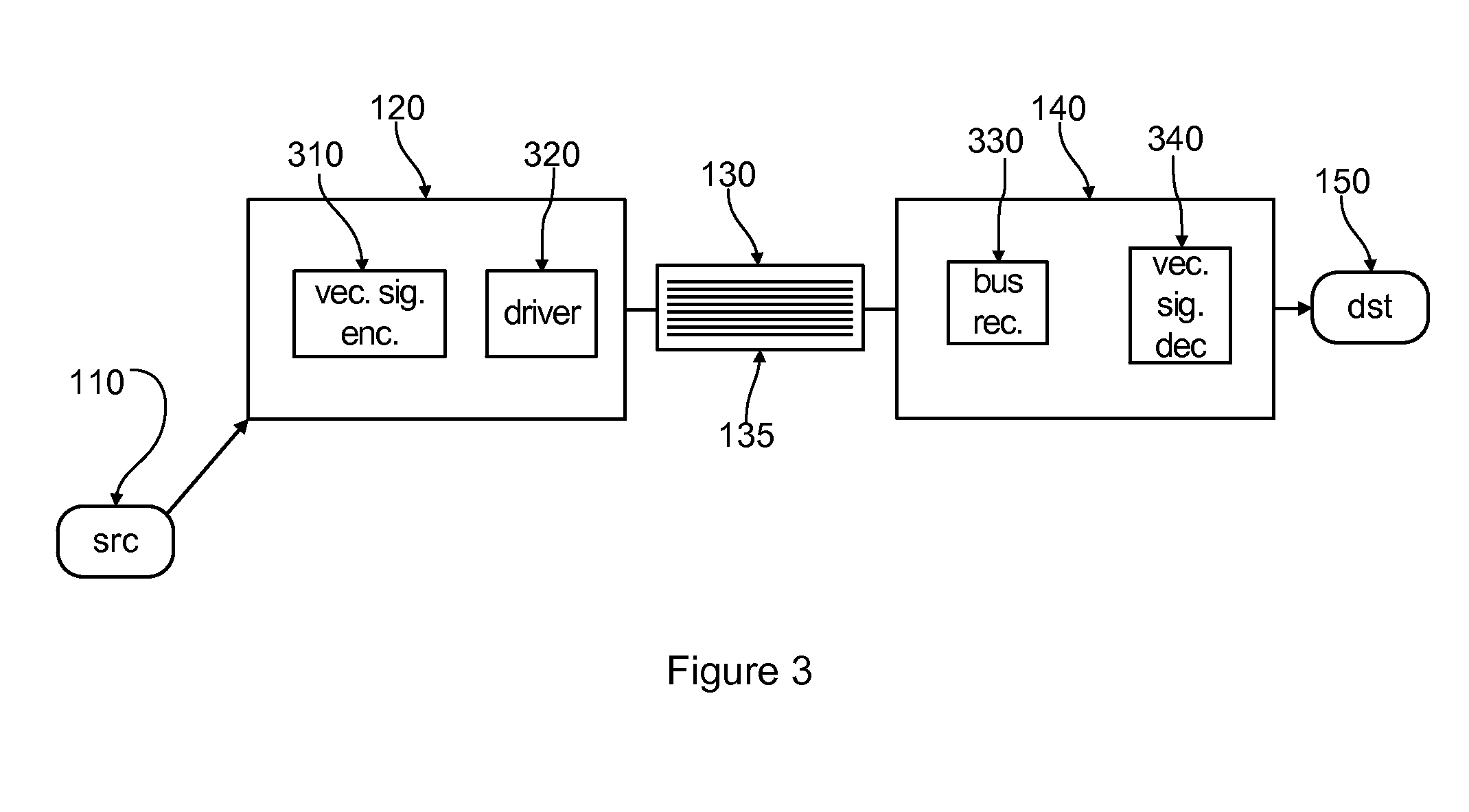Power and pin efficient chip-to-chip communications with common-mode rejection and sso resilience
a chip-to-chip communication and common-mode rejection technology, applied in the field of communication, can solve problems such as limiting the speed of the communication bus, generating electrical noise, errors,
- Summary
- Abstract
- Description
- Claims
- Application Information
AI Technical Summary
Problems solved by technology
Method used
Image
Examples
example vector
[0062]FIG. 3 is a schematic diagram illustrating use of a vector signal encoder and a vector signal decoder. Bus transmitter 120 might include a vector signal encoder 310 and a bus driver 320, while bus receiver 140 might include a vector signal decoder 340 and a bus receiver 330. Vector signal encoder 310 preferably encodes the information provided by source 110 such that Equations 1 and 2 hold.
[0063]In one example, vector signal encoder 310 uses a form of vector pulse amplitude modulation, wherein a basic pulse shape, p(t), with a finite duration of T seconds is defined and the amplitude of this pulse is modulated according to a signaling scheme. Two examples of pulse shapes are shown in FIG. 4. The left hand-side of FIG. 4 shows a rectangular pulse 410 of duration T. Pulse 410 is often used as an approximation for modeling purposes. A more practical pulse 420 is shown in the right hand-side of FIG. 4. Pulse 420 has a finite rise time, tr. In one preferred embodiment...
PUM
 Login to View More
Login to View More Abstract
Description
Claims
Application Information
 Login to View More
Login to View More - R&D
- Intellectual Property
- Life Sciences
- Materials
- Tech Scout
- Unparalleled Data Quality
- Higher Quality Content
- 60% Fewer Hallucinations
Browse by: Latest US Patents, China's latest patents, Technical Efficacy Thesaurus, Application Domain, Technology Topic, Popular Technical Reports.
© 2025 PatSnap. All rights reserved.Legal|Privacy policy|Modern Slavery Act Transparency Statement|Sitemap|About US| Contact US: help@patsnap.com



